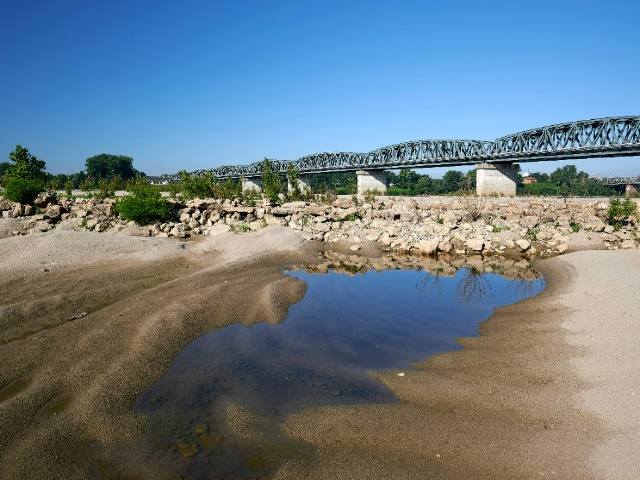 Railway bridge over the river Po, Italy. Image by mariobonotto on 123rf
Railway bridge over the river Po, Italy. Image by mariobonotto on 123rf
The effects of the drought conditions in many European countries are being felt in the hydropower generation sector, with low water levels in reservoirs constraining many producers.
On 12 August the European Centre for Medium-Range Weather Forecasts (ECMWF) said, “The drought that started in early summer as a consequence of low precipitation amounts over four consecutive seasons across Europe is persisting into late summer.
“The precipitation deficit is still severe, causing low soil moisture, high vegetation stress, low river flows and water shortages in many areas across Europe. The extended-range hydrological forecasts from the Copernicus Emergency Management Service show that this situation is likely to continue into the late summer for most of western Europe.”
The most recent data available from the European Drought Observatory (from the third 10-day period in July 2022) indicates 47% of the European Union territory is in warning conditions and 17% is in alert conditions.
The warning condition equates to a soil moisture deficit and the alert condition equates to vegetation stress following soil moisture and vegetation deficit.
In a report released on 13 July, EDO said, “Dry conditions are related to a wide and persistent lack of precipitation combined with early heat waves in May and June.” The report also said, “Reduced stored water volume has had severe impacts on the energy sector for both hydropower generation and cooling systems of other power plants.” And the report forecasted drier than normal water conditions for the next three months in “large areas of Europe.”
In specific instances of hydroelectric power being affected, the report said that in Italy, “Insufficient water availability led to a reduction or halt of operations for both hydro- and thermo-electric power production.” And, “In Portugal, hydroelectric energy stored in water reservoirs is at half the average of the previous seven years.”
Other reports indicate the supply of water in hydropower reservoir supplies, which are responsible for about 90% of Norway’s electricity, has dropped to the lowest point in 25 years. Hydroelectric producers in that country have cut generation to conserve water.
Over the longer term, the ECMWF said, “Our long-range, or seasonal, forecasts, which provide information on conditions up to seven months ahead, show that warmer-than-average temperatures are likely to persist over much of Europe until October, with southern and northern regions experiencing warmer-than-average temperatures to the end of the year. Precipitation is likely to remain lower than average in Portugal, as well as western parts of Spain and France.”
